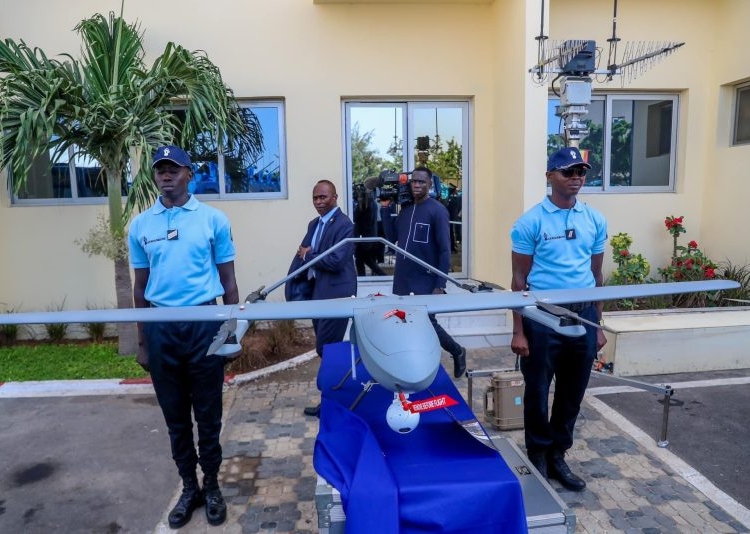Senegal, a West African nation facing security challenges from terrorism and migration, has boosted its drone capabilities with the acquisition of various unmanned aerial vehicles (UAVs) from different sources.
The Senegalese military has procured French EOS Technologie Strix 400, Spanish-made Embention M600WP Multirotor Drone, and Chinese-made Jiangsu Digital Eagle S&T Development YFT-CZ33 Fixed-wing VTOL drone, according to local media reports.
The Strix 400 is a surveillance UAV that offers 7 to 10 hours endurance, and video range of 150 kilometers. Its payload includes high-definition and infrared camera, and laser range finder. The Strix 400 can be assembled in 10 minutes by a single operator, after just two weeks of training.




The M600WP is a waterproof multirotor drone suitable for a wide variety of applications such as search and rescue (SAR), surveillance or delivery. With 15kg MTOW, this drone can handle up to 4kg payload, providing 45 min flight time with 1.5Kg gimbal camera. The waterproof multirotor frame is optimized for long endurance flights. This drone is designed especially to stand harsh weather and critical environments. The drone has exemplary size optimization, being considered as a light weight UAS and can be easily detached for fast drone deployment. Veronte Autopilot 1x is the core of the M600WP multirotor drone, it provides fully autonomous flight capabilities at the time it controls the payload and manages automatic failsafe routines.
The YFT-CZ33 is a fixed-wing VTOL drone that can take off and land vertically, and fly horizontally at high speed. It has a maximum take-off weight of 33kg, a payload capacity of 8kg, a cruising speed of 120km/h, and an endurance of 3 hours. It can be used for reconnaissance, surveillance, target acquisition, and strike missions.
On October 31, Spain delivered six new multicopter drones to Senegal and plans to reinforce its deployed security personnel to help the West African nation tackle a migration crisis, Spain’s acting Interior Minister Fernando Grande-Marlaska said on Monday.
Grande-Marlaska is in Senegal where he met his Senegalese counterpart, Sidiki Kaba, as the number of would-be migrants from West Africa, especially Senegal, to reach Spain’s Canary Islands this year is near a record high.
However, the Senegalese Gendarmerie had earlier acquired the type, which it displayed at the country’s April 4 independence day parade in Dakar. At least, a dozen of the type was displayed by the service.
UAVs are becoming a key enabler for African military and security forces in combatting terrorism and armed militancy. Senegal, which shares borders with Mali and Mauritania, where Islamist groups operate, has been a regional leader in counter-terrorism efforts. Senegal is also a major contributor to the United Nations peacekeeping mission in Mali (MINUSMA).
By enhancing its drone capabilities, Senegal aims to improve its situational awareness, intelligence gathering, and operational effectiveness in dealing with the complex and evolving security threats in the region.
Drones can help in counter-terrorism efforts by providing surveillance, intelligence, and strike capabilities to target potential terrorist threats. Drones can also reduce the risk of collateral damage and civilian casualties by using precision-guided munitions and avoiding direct confrontation with the enemy. Drones can also operate in remote and inaccessible areas where conventional forces may not be able to reach. Some sources suggest that obtaining armed drones reduces the amount of terrorism a country experiences. However, drones also raise ethical and legal concerns, such as the lack of transparency, accountability, and oversight of their use, as well as the potential for violating human rights and international law.


